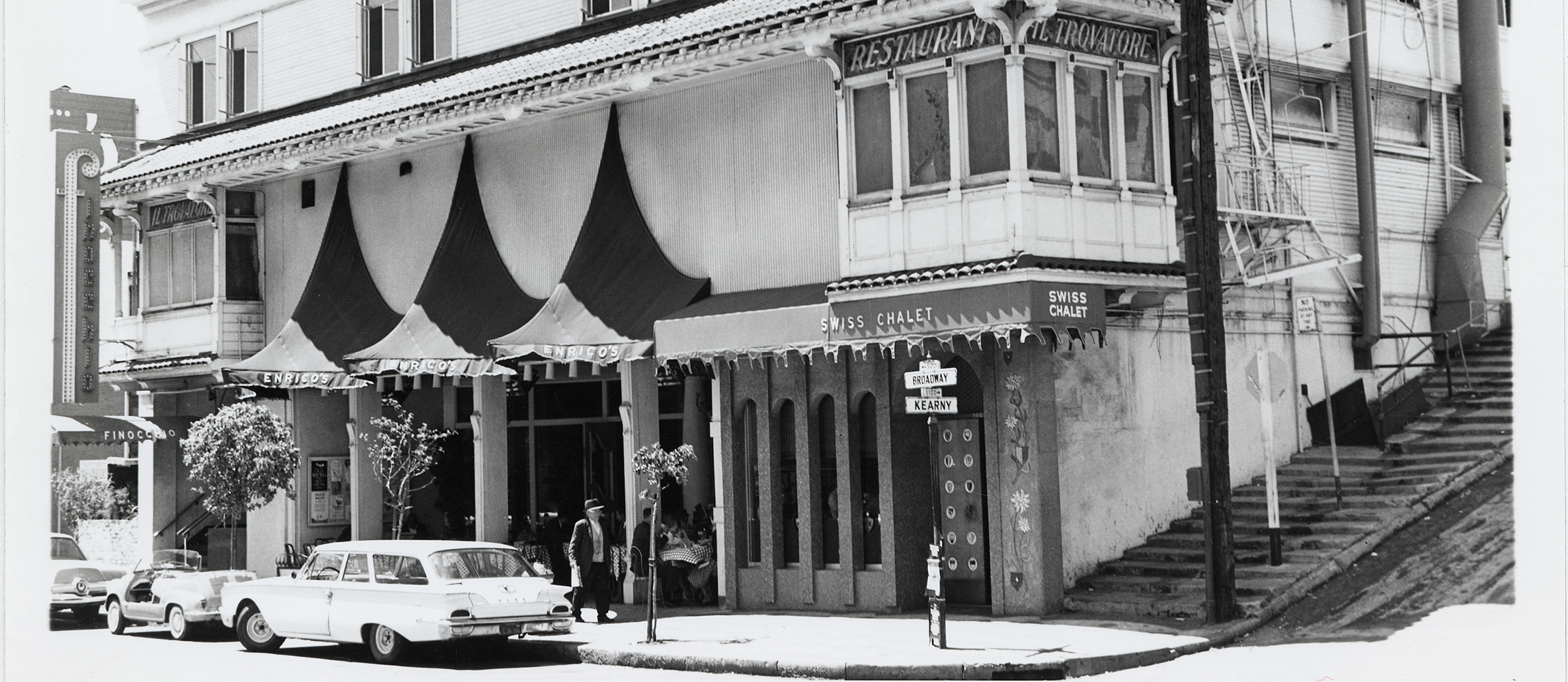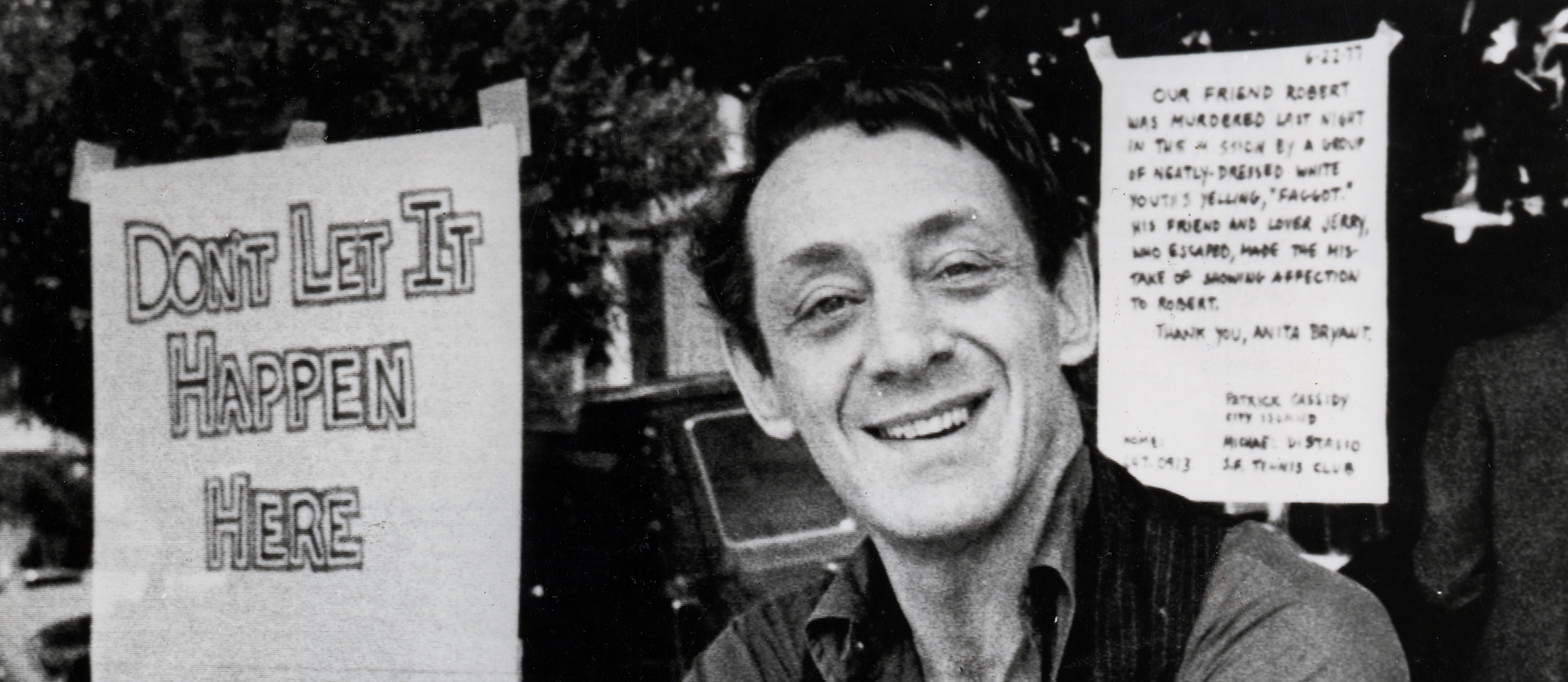Historical Locations in San Francisco
Lost Queer Landscapes

By Jim van Buskirk
The demographics and social characteristics of San Francisco urban environments shift over time, especially during these days of rampant gentrification. Economic, gender and ethnic diversity, as well as density and functionality are continually changing. The Castro is an example of a neighborhood that has seen many such shifts. There are those who would "keep the Castro queer," seemingly oblivious to the fact that 20th century Swedish, Norwegian and Finnish immigrants nicknamed it “Little Scandinavia” and working class Irish Catholics referred to it as "Holy Redeemer". The neighborhood was also known as "Eureka Valley" before becoming better known by the name on its iconic movie palace marquee.
Important meeting places for gay men and lesbians
Queer spaces have evolved throughout the city from the waterfront, South of Market, Haight, and Polkstrasse, among others. Various male cruising grounds have included Buena Vista Park, Top of the Mark (Hopkins Hotel), and Ringgold and Dore Alleys. Few residents remember the Valencia Street corridor as a vibrant women-centric district, that the bars and restaurants of North Beach served as important meeting places for gay men and lesbians, and the Tenderloin was a tinderbox for the queer rights movement. Finocchio's nightclub, 506 Broadway, 1964
Finocchio's nightclub, 506 Broadway, 1964
Other important examples of the built environment over the past century include:
- The Dash, considered San Francisco's first gay bar, opened at Pacific and Kearny in 1908.
- Finocchio's opened in 1929 as a speakeasy, then moved to a larger location at 506 Broadway, where it was renowned for its female impersonators.
- San Francisco's first gay bathhouses, Jack's Turkish Baths and the Third Street Baths, opened in the 1930s.
- The Black Cat, a bohemian hangout made infamous by José Sarria, opened at 710 Montgomery Street in 1933 and closed in 1964.
- Mona's, San Francisco's first openly lesbian bar, opened at Broadway and Columbus Avenue in 1936.
- Druid Heights, a rustic retreat near Mill Valley purchased in 1954 by lesbian poet Elsa Gidlow, became a spiritual home many influential writers and thinkers.
- San Francisco's largest vice raid occurred on September 14, 1961 when police arrested 81 men and 14 women at the Tay-Bush Inn, an after-hours club at Taylor and Bush.
- When the Tool Box opened on the corner of Fourth Street and Harrison in 1962, it was the first leather bar South of Market.
- On January 1, 1965 attendees of a New Year's Day costume ball at California Hall, 625 Polk Street, were harassed by police, becoming a turning point in the San Francisco gay rights movement.
- Gene Compton's cafeteria, at the corner of Turk and Taylor Streets, frequented by Tenderloin street youth, queens and hustlers, was the site of a riot in August 1966.
- In March 1967 Hal Call, an outspoken Mattachine Society activist, founded the Adonis Bookstore, the first gay bookstore in the United States, on Ellis Street in the Tenderloin.
 Harvey Milk in front of Castro Camera, 1977
Harvey Milk in front of Castro Camera, 1977
Sometimes a plaque in the street commemorates an important historic site, such as Harvey Milk and Scott's Smith's Castro Camera shop, which served as an ad hoc community center, from which Milk ran his supervisorial campaigns. More often the cultural significance remains unmarked. Poet Robert Duncan and his long-time partner artist Jess lived for many years at 3267 Twentieth Street, where there is no indication of the amazing cultural synergies that occurred in their domestic space.
As we walk down city streets, the ghosts of our forebears behoove us to preserve our past, to remember the many important individuals and institutions that preceded us.